#instruments de percussion
Explore tagged Tumblr posts
Text
Histoire du Handpan : Origines et Évolution
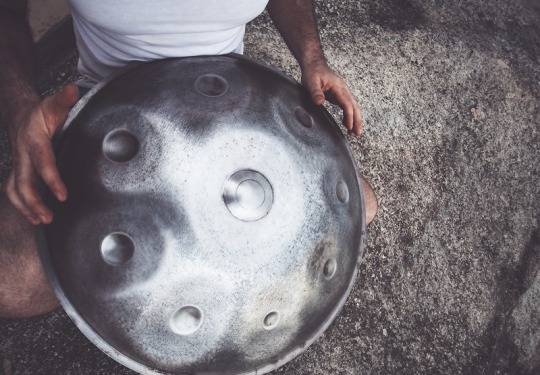
Découvrez le handpan, un instrument qui a révolutionné la musique moderne avec sa sonorité envoûtante. Cet article explore ses origines mystérieuses et son développement fascinant pour devenir un favori mondial de la relaxation et de la méditation.
1. Naissance en Suisse
Le premier handpan, appelé Hang, a été créé en 2000 par Felix Rohner et Sabina Schärer à Berne. Inspiré par le steel drum et le gamelan indonésien, cet instrument novateur a rapidement capté l'attention pour sa sonorité unique et son potentiel de bien-être.
2. Conception et fabrication
Chaque handpan est fabriqué à la main, ce qui en fait un objet d'art autant qu'un instrument. Les artisans façonnent chaque note pour produire des mélodies harmoniques parfaites, utilisant des techniques spéciales pour accorder chaque note à des fréquences comme le 432hz ou le 440 hertz.
3. Expansion mondiale
Après son invention, le handpan a rapidement trouvé sa place dans les communautés de musique et de méditation du monde entier. De la Suisse, cet instrument a voyagé vers les États-Unis, l'Australie et au-delà, chaque artisan apportant sa touche personnelle au design et à la sonorité.
4. Diversité des modèles

Aujourd'hui, il existe une grande variété de handpans, offrant différentes gammes et nombres de notes, de handpan 6 notes pour les débutants à handpan 17 notes pour les musiciens expérimentés. Cette diversité permet à chacun de trouver l'instrument qui lui convient le mieux, que ce soit pour la composition musicale ou la relaxation profonde.
5. Acheter et apprendre le handpan
Acheter votre premier handpan peut être une expérience excitante mais intimidante. Il est essentiel de choisir un instrument dont la gamme et le ton résonnent avec vos intentions artistiques ou thérapeutiques. De nombreux ateliers et boutiques en ligne, comme Zenapan, peuvent vous aider à trouver le handpan parfait pour débuter ou perfectionner votre pratique.
Conclusion
Le handpan continue de charmer les musiciens et les amateurs de paix intérieure à travers le monde. Que vous soyez un débutant ou un joueur expérimenté, la richesse de ses mélodies et sa capacité à induire la relaxation sont inégalées. Visitez Zenapan pour explorer une sélection variée de handpans et commencez votre propre voyage musical.
Questions fréquentes
1. Qu'est-ce qu'un handpan ? Le handpan est un instrument de percussion mélodique moderne, connu pour ses sonorités douces et relaxantes, idéal pour la méditation et la création musicale.
2. Où a été inventé le handpan ? Le handpan a été inventé en Suisse en 2000 par Felix Rohner et Sabina Schärer, inspiré par le steel drum et le gamelan.
3. Combien coûte un handpan ? Le prix d'un handpan peut varier de 1 000 à plus de 5 000 euros, dépendant de la qualité de fabrication, du nombre de notes et de l'artisan.
4. Comment prendre soin de mon handpan ? Gardez votre handpan à l'abri de l'humidité et des températures extrêmes. Nettoyez-le régulièrement avec un chiffon sec et doux pour maintenir sa qualité sonore.
#handpan#relaxation musicale#instruments de percussion#méditation sonore#histoire du handpan#acheter handpan
0 notes
Text
José de Nebra (1702-68) - Seguidilla II from Donde hay violencia, no hay culpa. Performed by Pablo Heras-Casado/Concerto Köln on period instruments.
#jose de nebra#baroque#classical music#strings#orchestra#period performance#period instruments#rarely performed composers#baroque music#string orchestra#opera#seguidilla#castanets#percussion
22 notes
·
View notes
Text

also drew this sylvee dancing la marimba but i got lazy drawing actual dteam to go with her. so
la marimba esmeraldeña (from provincia de esmeraldas) is a percussion instrument. many genres have emerged from this particular instrument, such as caramba, bomba, cortejos (courting), profesiones (declarations), religious songs such as arrullo, chigualos, sanjuanito, etc. i like to think sylvee is dancing to this song
this is a style very prominent within the north coast and its influences are mainly from afroecuadorian folks. I WANT A WHITE DRESS OF THIS STYLE SO FUCKING BADDDD.
58 notes
·
View notes
Text
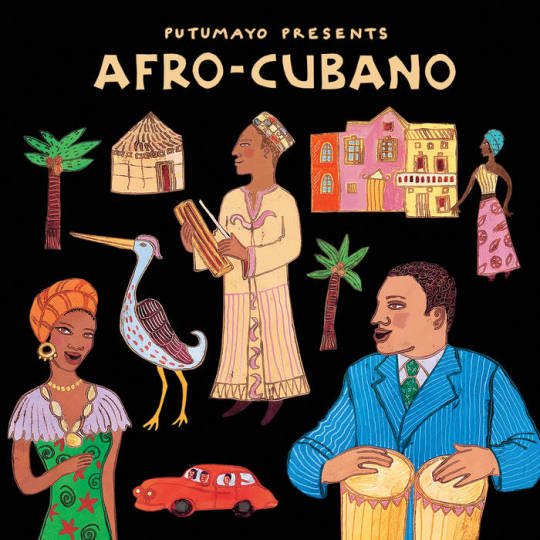
Music of African heritage in Cuba derives from the musical traditions of the many ethnic groups from different parts of West and Central Africa that were brought to Cuba as slaves between the 16th and 19th centuries. Members of some of these groups formed their own ethnic associations or cabildos, in which cultural traditions were conserved, including musical ones. Music of African heritage, along with considerable Iberian (Spanish) musical elements, forms the fulcrum of Cuban music.
Much of this music is associated with traditional African religion – Lucumi, Palo, and others – and preserves the languages formerly used in the African homelands. The music is passed on by oral tradition and is often performed in private gatherings difficult for outsiders to access. Lacking melodic instruments, the music instead features polyrhythmic percussion, voice (call-and-response), and dance. As with other musically renowned New World nations such as the United States, Brazil and Jamaica, Cuban music represents a profound African musical heritage.
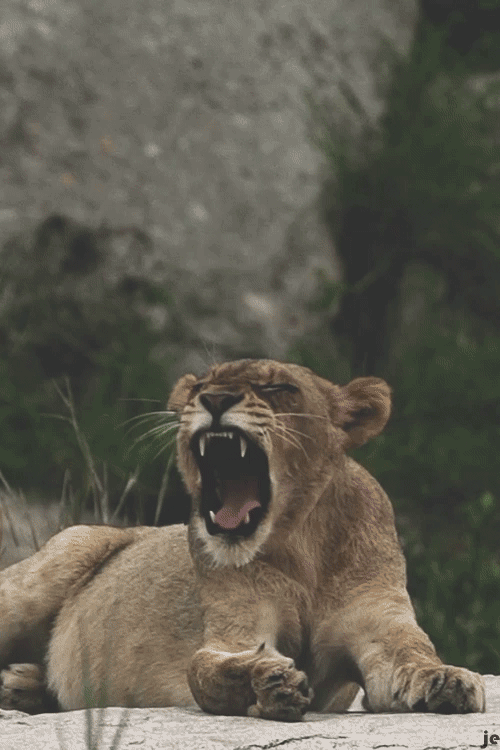
Clearly, the origin of African groups in Cuba is due to the island's long history of slavery. Compared to the USA, slavery started in Cuba much earlier and continued for decades afterwards. Cuba was the last country in the Americas to abolish the importation of slaves, and the second last to free the slaves. In 1807 the British Parliament outlawed slavery, and from then on the British Navy acted to intercept Portuguese and Spanish slave ships. By 1860 the trade with Cuba was almost extinguished; the last slave ship to Cuba was in 1873. The abolition of slavery was announced by the Spanish Crown in 1880, and put into effect in 1886. Two years later, Brazil abolished slavery.
Although the exact number of slaves from each African culture will never be known, most came from one of these groups, which are listed in rough order of their cultural impact in Cuba:
The Congolese from the Congo Basin and SW Africa. Many ethnic groups were involved, all called Congos in Cuba. Their religion is called Palo. Probably the most numerous group, with a huge influence on Cuban music.
The Oyó or Yoruba from modern Nigeria, known in Cuba as Lucumí. Their religion is known as Regla de Ocha (roughly, 'the way of the spirits') and its syncretic version is known as Santería. Culturally of great significance.
The Kalabars from the Southeastern part of Nigeria and also in some part of Cameroon, whom were taken from the Bight of Biafra. These sub Igbo and Ijaw groups are known in Cuba as Carabali,and their religious organization as Abakuá. The street name for them in Cuba was Ñáñigos.
The Dahomey, from Benin. They were the Fon, known as Arará in Cuba. The Dahomeys were a powerful group who practised human sacrifice and slavery long before Europeans arrived, and allegedly even more so during the Atlantic slave trade.
Haiti immigrants to Cuba arrived at various times up to the present day. Leaving aside the French, who also came, the Africans from Haiti were a mixture of groups who usually spoke creolized French: and religion was known as vodú.
From part of modern Liberia and Côte d'Ivoire came the Gangá.
Senegambian people (Senegal, the Gambia), but including many brought from Sudan by the Arab slavers, were known by a catch-all word: Mandinga. The famous musical phrase Kikiribu Mandinga! refers to them.
Subsequent organization
The roots of most Afro-Cuban musical forms lie in the cabildos, self-organized social clubs for the African slaves, and separate cabildos for separate cultures. The cabildos were formed mainly from four groups: the Yoruba (the Lucumi in Cuba); the Congolese (Palo in Cuba); Dahomey (the Fon or Arará). Other cultures were undoubtedly present, more even than listed above, but in smaller numbers, and they did not leave such a distinctive presence.
Cabildos preserved African cultural traditions, even after the abolition of slavery in 1886. At the same time, African religions were transmitted from generation to generation throughout Cuba, Haiti, other islands and Brazil. These religions, which had a similar but not identical structure, were known as Lucumi or Regla de Ocha if they derived from the Yoruba, Palo from Central Africa, Vodú from Haiti, and so on. The term Santería was first introduced to account for the way African spirits were joined to Catholic saints, especially by people who were both baptized and initiated, and so were genuine members of both groups. Outsiders picked up the word and have tended to use it somewhat indiscriminately. It has become a kind of catch-all word, rather like salsa in music.
The ñáñigos in Cuba or Carabali in their secret Abakuá societies, were one of the most terrifying groups; even other blacks were afraid of them:
Girl, don't tell me about the ñáñigos! They were bad. The carabali was evil down to his guts. And the ñáñigos from back in the day when I was a chick, weren't like the ones today... they kept their secret, like in Africa.
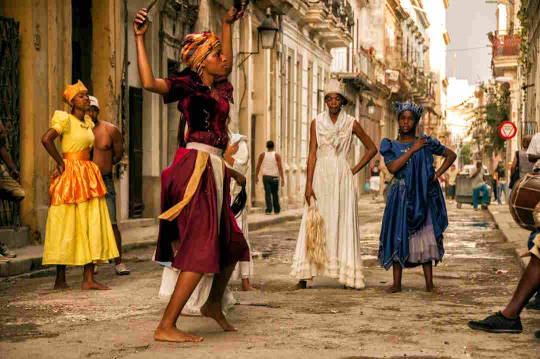
African sacred music in Cuba
All these African cultures had musical traditions, which survive erratically to the present day, not always in detail, but in the general style. The best preserved are the African polytheistic religions, where, in Cuba at least, the instruments, the language, the chants, the dances and their interpretations are quite well preserved. In few or no other American countries are the religious ceremonies conducted in the old language(s) of Africa, as they are at least in Lucumí ceremonies, though of course, back in Africa the language has moved on. What unifies all genuine forms of African music is the unity of polyrhythmic percussion, voice (call-and-response) and dance in well-defined social settings, and the absence of melodic instruments of an Arabic or European kind.
Not until after the Second World War do we find detailed printed descriptions or recordings of African sacred music in Cuba. Inside the cults, music, song, dance and ceremony were (and still are) learnt by heart by means of demonstration, including such ceremonial procedures conducted in an African language. The experiences were private to the initiated, until the work of the ethnologist Fernando Ortíz, who devoted a large part of his life to investigating the influence of African culture in Cuba. The first detailed transcription of percussion, song and chants are to be found in his great works.
There are now many recordings offering a selection of pieces in praise of, or prayers to, the orishas. Much of the ceremonial procedures are still hidden from the eyes of outsiders, though some descriptions in words exist.
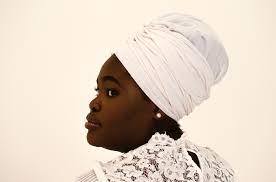
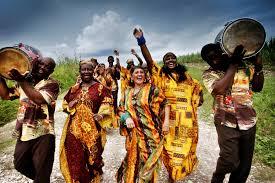
Yoruba and Congolese rituals
Main articles: Yoruba people, Lucumi religion, Kongo people, Palo (religion), and Batá
Religious traditions of African origin have survived in Cuba, and are the basis of ritual music, song and dance quite distinct from the secular music and dance. The religion of Yoruban origin is known as Lucumí or Regla de Ocha; the religion of Congolese origin is known as Palo, as in palos del monte.[11] There are also, in the Oriente region, forms of Haitian ritual together with its own instruments and music.
In Lucumi ceremonies, consecrated batá drums are played at ceremonies, and gourd ensembles called abwe. In the 1950s, a collection of Havana-area batá drummers called Santero helped bring Lucumí styles into mainstream Cuban music, while artists like Mezcla, with the lucumí singer Lázaro Ros, melded the style with other forms, including zouk.
The Congo cabildo uses yuka drums, as well as gallos (a form of song contest), makuta and mani dances. The latter is related to the Brazilian martial dance capoeira
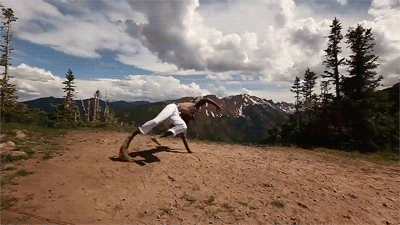
#african#afrakan#kemetic dreams#africans#brownskin#brown skin#afrakans#african culture#fitness#afrakan spirituality#afro cuban music#afro cuban#igbo#yoruba#congo#african music
195 notes
·
View notes
Text
music terms | français - english
verbes
assourdir - to deafen/muffle
chanter - to sing
composer - to compose
entendre - to hear
gratter - to strum
jouer - to play
tambouriner - to drum
écouter - to listen
noms (masc/fem)
un accord - chord
un bec - mouthpiece
les bois - woodwinds
un bourdonnement - drone
un cor - horn/french horn (haha)
un gazou - kazoo
un groupe - band
un hautbois - oboe
un instrument de cuivres - brass instrument
un instrument de musique - musical instrument
un instrument à cordes - string instrument
un mode - mode
un orchestre d'harmonie - concert band
un orchestre de jazz
un pavillon - bell (for brass instruments)
un piano - piano
un rythme - rhythm
un saxophone - saxophone
un synthétiseur - synthesiser
un tambour - drum
un tambourin - tambourine
un tempo - tempo
un ton/tonalité - key
un violon - violin
un violoncelle
une baguette - drumstick
une basse - bass guitar
une batterie - drum kit
une boîte à rythmes - drum machine
une caisse claire - snare drum
une chanson - song
une charleston - hi-hat
une clarinette - clarinet
une contrebasse - double bass
une corde - string
une flûte - flute
une frette - fret
une gamme - scale
une grosse caisse - bass drum
une guitare - guitar
une mesure - time signature
une note - note
une pédale - pedal
les percussions - percussion
une symphonie - symphony
une touche - fretboard, piano key
une triade - triad
une trompette - trumpet
adjectives
alto - alto
basse - bass
majeur - major
mineur - minor
ténor - tenor
cette liste est plus longue que l'autre, j'espère que c'est mieux comme ça :3
#frenchblr#french langblr#french learning#french studyblr#language learning#french notes#vocab list#vocabulaire#french vocab#musique
56 notes
·
View notes
Text






In the Montsià and Baix Ebre areas in the South of Catalonia (Terres de l'Ebre), there is a Christmas tradition called aubades. Groups of friends, classmates or co-workers would come together with the instruments they know how to play, which are usually the dolçaina (traditional wind instrument), guitar, guitarró (traditional instrument similar to the ukelele), percussion instruments such as anise bottles, and singing to go around the town all night long until the sunrise (aubada means "dawn"), playing songs and improvising on a 7/8 rhythm.
This used to be done in more occasions during the year as a celebration, such as when there was a wedding. During the Christmas period, people would sing every night starting on Christmas Eve (24th of December) until Three Wise Men Day (6th of January). In return for their music, people give them sweets such as paracotes (a local kind of buns or fritters), wine, ratafia, and aiguardent liquor, or some money.
Nowadays, aubades in other moments of the year have lost popularity, and people don't sing every night of the Christmas period anymore. But it's still done on some of the nights of this period. Nowadays, there are still improvised lyrics as well as well-known folk songs, but the groups are no longer young people of the same age, classmates or co-workers, but anyone regardless of age or friendship. It has been lost in many towns, but it's still done in Sant Jaume d'Enveja, and occasionally in Roquetes and Tortosa.
Source: Inventari del Patrimoni Cultural Immaterial de les Terres de l'Ebre.
#tradicions#nadal#sant jaume d'enveja#catalunya#christmas traditions#christmas#folk music#folk culture#traditional music#cultures#culture#ethnography#europe
10 notes
·
View notes
Text
Samba instruments recognized as Brazil's national cultural heritage
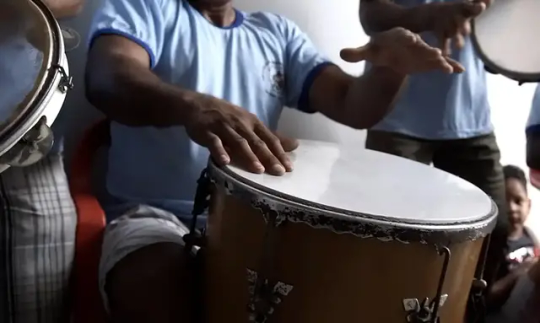
A total of nine samba musical instruments, including the pandeiro (a type of hand frame drum), tam-tam (a percussion instrument, often referred to as a gong), cuíca (a type of friction drum), and tambourine, have been officially recognized as part of Brazil's national cultural heritage. The law formalizing this recognition was sanctioned by President Luiz Inácio Lula da Silva on Monday (Sep. 30).
The craftsmanship techniques used to create these musical instruments are also recognized as valuable cultural practices and traditions.
The list of nine percussion instruments commonly used in samba circles and samba schools also includes the surdo (a type of bass drum), rebolo (another type of drum), frying pan, timba, and repique de mão (hand drum).
As stated in the new law, these instruments must be acknowledged as expressions of national culture when they follow the traditional practices and methods specific to their craftsmanship. The details regarding the production processes for these instruments will be specified in an upcoming decree.
Continue reading.
16 notes
·
View notes
Text
Release date unknown.
Tamboo bamboo is a Trinidadian percussion instrument (idiophone) created in Trinidad BWI , and is a notable precursor to the creation of steelpan. Its name derives from the French word for drum (tambour) and the material from which the instrument is predominantly made from. It is still played by carnival-goers in Trinidad today, although it was the dominant instrument at carnival at the turn of the twentieth century.
Source : https://en.wikipedia.org/wiki/Tamboo_bamboo#References
9 notes
·
View notes
Text
La batterie est un ensemble d’instruments à percussion. Le nombre d’éléments peut varier mais on rencontre 2 types d’instruments, la batterie a été “inventée” au début du 20ème siècle par les premiers musiciens de jazz qui ont assemblé divers instruments qui existaient déjà séparément. A l’origine: une grosse caisse, une caisse claire et une cymbale. La grosse caisse est frappée par un ‘marteau’ actionné par une pédale au pied droit. La caisse claire. Elle possède un timbre sur la peau inférieure. Les toms (aigu, medium et basse). Les cymbales. Le charleston (ou ‘hi-hat’ en anglais) est un assemblage de 2 cymbales accrochées sur un socle et actionné par une pédale (pied gauche). Le métal qui constitue les cymbales est un bronze (alliage de cuivre et d’étain). Les fûts sont en bois ou en matières plastiques. Les peaux étaient autrefois en vraie peau. Aujourd’hui en matières plastiques. Les supports sont en acier (alliage de fer et de carbone). On peut accorder chaque membrane en la tendant plus ou moins sur le bord du fût. Plus la peau est tendue et plus sa fréquence de vibration est élevée, et plus le son est aigu. Levier pour actionner le timbre. La caisse claire est formée d’un fut cerclé de métal sur lequel sont tendues 2 membranes (une de chaque côté. Un timbre peut se plaquer sur la peau inférieure à l’aide d’un levier. Deux plaques métalliques de mêmes dimensions n’émettent pas le même son: l’une est en cuivre, l’autre en aluminium. La baguette: un manche et une petite tête en bois en forme d’olive. La mailloche: un manche prolongé par une tête arrondie et rembourrée. Le balai: un manche prolongé par un faisceau de brins (en métal ou en plastique). Elle est présente dans (presque) toutes les musiques actuelles. Elle forme avec la basse la section rythmique.
5 notes
·
View notes
Note
What are some general mixing tips? Ofc i know every rip is different and stuff is suggestive but i mean like when and how would i use eq, when and how would i use reverb, when and how would i use delay, when and how would i use compression
You have a good point in that every rip (or song or whatever you're doing) is different, even if it's derivative you're making a piece of art so there's plenty of ways to approach it. There's definitely ways to mix that most people would consider sounding better than others, but getting that right is tricky if you can't reliably hear the difference. For a while I didn't really have an ear for these things (hearing clashing and/or subpar mixing) so I just had to go off what other people told me. Eventually, to my surprise, I started to develop an ear for this and now I can judge both my own rips and other people's rips on various criteria. I think that's probably just from raw practice. (Note: I don't have perfect pitch but you don't need that, I have a decent sense of relative pitch now and often use Melodyne to more accurately measure what I'm hearing.) Here's a handful of examples of when I use all of the things you mentioned. This is really not comprehensive, it's just a lot of different tips I remembered.
EQ
Note: You might want to keep the names of frequency ranges in mind here for what I'm saying. If you open Fruity parametric EQ 2 in FL, you can see at the top that it's divided into SUB, BASS, LOW MID, MID, HIGH MID, PRS, and TREBLE. You can find this out by testing, but generally:
bass instruments will be in SUB and BASS (of course). But that's not the only thing that will be there, "bass" is not only an instrument name but a range of frequencies.
Vocals will be roughly around the MIDs, usually.
hi-hats, cymbals and other "wispy" sounding things (like sibilants, the "sh", "t", "ch" in vocals etc) will tend to be in the highest range, near TREBLE or whatever PRS is meant to mean.
Everything else varies wildly, but the good thing is that with visual EQ you can test and hear for yourself what sounds are spread across what frequencies, by reducing or raising them.
Golden rule of EQing mashups: In general, you want to strike a balance in the frequencies between the sources. If one source is naturally strong in the high mids (like in its vocals), you may want to reduce the high mids of the other source to compensate. These songs were not originally designed to be together, so the goal is to somehow make them feel like a cohesive whole. This is why using split stems/multitracks really helps, because you can more accurately reduce certain instrumental elements than a soft EQ would have (for example, by totally removing the bassline of one of the sources so that it doesn't sound muddy against the other source's bass.) Like everything here though, how much you should follow this "rule" would vary in practice depending on the music.
Specific EQ tips:
On DIY vocals I always remove the sub and some of the bass (not too much to where it heavily affects how they sound) because those don't need to be there. I think it cleans up the mix a little bit.
If vocals sound too harsh or piercing, I often lower the high mids. Melodyne pitch-shifting and stretching on certain vocals can sometimes cause that.
Similarly, if percussion is too harsh-sounding, I may lower the highs (treble) a bit, but carefully and not too much.
Reverb
This is another one where… I just use it when it sounds nice. I like putting a little bit of reverb on vocals when it feels like the mix needs it, and sometimes I do it when it probably doesn't need it. Taking FL Studio's Reeverb as an example, the knobs you may want to fiddle with the most would be SIZE, DEC (decay), DRY/WET, H.CUT/L.CUT and maybe BASS?
If I used a de-reverb algorithm on vocals so that I could pitch-shift them better, I would always put a reverb effect back on when I add the vocals into the mix.
One useful thing to note: when you add reverb (particularly to vocals) it's probably a good idea to increase the low cut, this can make the reverb sound less muddier and generally better. This is a tip I gathered from a friend, and posted to Twitter last year.
(There's also stuff to say about convolvers and impulse responses in regards to matching reverb in sequenced music, but I feel like that's outside the scope of this post.)
Delay
Delay makes echo(es) repeated across intervals. You can make the delay panned if you want (even back-and-forth between the ears), or you can make its frequency cutoff reduce with further echoes (sort of a "going underwater" effect), among other options. One thing I use delay for in mashups is when I'm covering a lead melody with vocals and the lead in the instrumental has a delay channel or effect, so I find it fun to match that effect on the vocals too, with the same delay time and panning.
Sometimes you might just want to do it for fun, or to make something sound less empty. In Circus (HQ Audio) - Five Nights at Freddy's I added delay to the vocals. The original Right Foot Creep vocals don't really have any; the Most Mysterious Song vocals might have a little but that didn't matter to me. I added them because it sounded cool and more "full" (one reason might have been the short syllables with more empty space between lines than Right Foot Creep's lyrics normally provide.)
Compression
This one is actually an area I'm less familiar with. I certainly didn't understand compressors for a while, and I usually prefer to use the limiter because the visual aid really helps me understand what's happening to the sound. (That's really just me though, plenty of people I know use other things like Fruity Compressor or common third-party VSTs like OTT, look into these if you're interested.) But they're a very important tool for mixing, and I can definitely think of reasons I would use compressors or limiters:
Evening out the level of vocals. It helps the sound of vocals to have most words be roughly around the same volumes. DIY vocals can especially have this issue, for various reasons relating to how the instrumental may have affected them. A limiter that just smoothes off the high peaks of vocals can be a simple way to solve that. If you want to do it more "finely" for a possible better sound, there's lots of ways syllable volumes can be changed individually. That includes volume automation, clips in the newer versions of FL, Melodyne's amplitude tool, etc.
Compressing drums to make them sound tighter. Again, something that's hard for me to describe at my current level of knowledge/skill lol. I would suggest to put the "Drums" preset in Fruity Compressor on a drum stem and hear what happens to it, as one example of how you can change the texture of a sound through compression.
I can use this topic to talk about the master limiter too. Generally when I'm mixing a rip I like having the volume sort of generally approach the limiter ceiling, maybe going over it a little bit on occasion but not too much of the time. If you compress/limit something too hard, it can become a "brick wall" and will certainly sound like it. (Again, sometimes that could be what you're going for!)
Final note - don't be afraid to use automation clips to change any of these effects' values throughout the track. It's possible that you may want to EQ certain words or lines harsher than others, for example, or that it's appropriate for one section of a melody to have more reverb than the other. Once you get a good feel for what sounds better, you might start going crazy with automation like I have on occasion, but that's not usually expected.
I wrote a lot, but there's definitely parts of this that are lacking in detail either because I thought it was too much for this post, don't have enough knowledge or just couldn't explain it well. If you have any further questions please feel free to ask.
#mixing#audio#mashups#eq#reverb#delay#compression#ripping#siivagunner#hqrips#vocals#vocal mixing#melodyne#meme
6 notes
·
View notes
Text
I Can't Move On
@ejassy, @onthecuterside, @goosetan-sonyeondan, @stormblessed95, @rantingravingliving, all the Anons and anyone else tripping on the instrumentals...
...this one is for you.
The production on this song has my mind on a leash.
youtube
(timestamp 1:45 - 2:16 is just orgasmic)
*
I'm hearing Amy Winehouse's Back to Black in the chord progression, Jimin's Lie in the organ instrumentals, Rihanna's Rude Boy in the secondary percussion / rhythm, and the second half of the song from minute 1:45 …c'est là que j'ai su que j'étais fichu.
Based on the instrumentals alone this song already has a Grammy. It doesn't matter whether or not anyone thinks it deserves a Grammy, it has already taken it. You're right about that @ejassy, and I'm happy more ARMYs feel that way too.
Speaking of which, the director of the German Literature Archive Marbach (DLA) said she has two ARMYs in her family and that's how she knew about the Rilke poem written on Jimin's body. Any ARMY in Germany who would like to read more of Rilke's original letters, you now have a standing invitation to the DLA.
PDogg outdid himself with this track, but the real direction has to have come from Jimin because I see too many similarities in songs he has composed/written before: Blood, Sweat and Tears, and Lie.
I'm still processing it but with every listen I notice something new and can't move on. This usually only happens with music made by the rapline, for me. But Jimin...
Goodness, Jimin just... it's too good. I can't speak. Il me donne envie de tuer, de baiser, de gravir des montagnes, de plonger dans l'océan. Jimin me donne envie de crier.
Anyway, stream:
youtube
124 notes
·
View notes
Text
Comparer Handpan et Hang Drum : Similarités et Différences
Le monde des instruments de percussion en acier offre une variété fascinante de sonorités et de styles, notamment avec le handpan et le hang drum. Bien que souvent confondus, ces deux instruments ont leurs propres caractéristiques distinctives.
Dans ce billet, nous explorerons les similarités et les différences entre le handpan et le hang drum, en mettant en lumière leurs constructions, leurs sonorités uniques, et ce qui les rend uniques dans le monde de la musique contemporaine.

1. Construction et Fabrication
Le handpan et le hang drum sont tous deux fabriqués à partir d'acier spécial, généralement martelé à la main pour créer des dômes et des notes spécifiques. Le hang drum, initialement développé par PANArt, a une structure en forme de bol avec des notes disposées autour du centre.
En revanche, le handpan, une évolution du hang drum, présente souvent une construction en forme de soucoupe avec des notes disposées de manière plus complexe, permettant une gamme tonale plus large et une résonance différente.
Apprenez-en davantage sur l'histoire et les caractéristiques du hang drum sur Zenapan.com et choisissez entre un handpan en acier inoxydable, en acier nitruré ou ember.
2. Sonorités et Timbres
Les sonorités du handpan et du hang drum sont distinctes mais partagent une qualité méditative et apaisante. Le hang drum tend à avoir un son plus doux et résonant, avec des harmoniques riches qui résonnent longuement.
En comparaison, le handpan offre souvent une palette sonore plus étendue avec des basses profondes et des harmoniques aiguës, permettant une plus grande variété d'expressions musicales.
3. Techniques de Jeu

Les techniques de jeu pour le handpan et le hang drum impliquent généralement l'utilisation des mains pour frapper les notes, bien que des variantes telles que le tapping, le hammering et les glissandi puissent être utilisées pour explorer les possibilités sonores étendues de chaque instrument.
La sensibilité au toucher et la dynamique du jeu sont essentielles pour tirer le meilleur parti de ces instruments percussifs uniques.
Explorez nos conseils pour améliorer vos techniques de jeu pour handpan et hang drum sur Zenapan.com.
4. Application Musicale et Styles
Le hang drum a souvent été associé à des styles musicaux méditatifs, ambients et ethniques, tandis que le handpan a élargi son application à des genres plus contemporains tels que la musique du monde, l'électronique, et même le jazz.
Cette diversité d'application reflète la flexibilité tonale et stylistique de chaque instrument, adapté à des performances solo ou en groupe dans divers contextes musicaux.
Explorez une variété de handpans uniques sur Zenapan.com et trouvez celui qui correspond à votre style musical.
5. Fabricants et Accessibilité

Le hang drum, initialement produit par PANArt, a limité sa production et est devenu une rareté sur le marché.
En revanche, le handpan a vu une expansion de la production par de nombreux artisans et fabricants à travers le monde, offrant une accessibilité accrue mais avec des variations significatives de qualité et de prix.
Chaque instrument est souvent fait à la main, ce qui contribue à sa valeur artisanale et à sa sonorité unique.
Conclusion
Bien que le handpan et le hang drum partagent des racines communes en tant qu'instruments de percussion en acier, ils ont évolué pour présenter des caractéristiques distinctes qui les rendent uniques dans le paysage musical contemporain.
Que vous soyez attiré par les harmoniques douces du hang drum ou la polyvalence expressive du handpan, ces instruments continuent d'inspirer les musiciens du monde entier par leur beauté sonore et leur potentiel créatif infini.
Consultez notre guide d'achat pour choisir entre handpan et hang drum sur Zenapan.com et commencez votre voyage musical dès aujourd'hui.
FAQs
Quelle est la principale différence entre un handpan et un hang drum ?
Le hang drum a une structure en forme de bol avec des notes disposées autour du centre, tandis que le handpan présente souvent une construction en forme de soucoupe avec des notes disposées de manière plus complexe.
2. Quelles sont les applications musicales typiques du hang drum et du handpan ?
Le hang drum est souvent utilisé dans des styles méditatifs, ambiants et ethniques, tandis que le handpan s'étend à des genres contemporains comme la musique du monde, l'électronique et le jazz.
3. Comment choisir entre un handpan et un hang drum ?
Choisissez en fonction de vos préférences sonores, de vos styles musicaux préférés et de la disponibilité des instruments. Essayez de tester différents modèles pour trouver celui qui correspond le mieux à votre style de jeu.
4. Quelles sont les techniques de jeu recommandées pour le handpan et le hang drum ?
Les techniques de jeu incluent le tapping, le hammering et les glissandi, adaptées pour explorer les possibilités sonores uniques de chaque instrument.
5. Où puis-je acheter un handpan ou un hang drum de qualité ?
Vous pouvez trouver des handpans et des hang drums de qualité chez des fabricants réputés ou sur des plateformes en ligne spécialisées dans les instruments de percussion en acier.
0 notes
Text
Intercommunal Free Dance Music Orchestra - L’Inter Communal and Le Musichien, Souffle Continu Records reissues of albums from 1978 and 1983
The Intercommunal Free Dance Music Orchestra was created in 1971 by an “old hand” of French free jazz, François Tusques. Free Jazz, was also the name of the recording made by the pianist and other like-minded Frenchmen (Michel Portal, François Jeanneau, Bernard Vitet, Beb Guérin and Charles Saudrais) in 1965. But, six years later Tusques had had his fill of free jazz. After having wondered, together with Barney Wilen (Le Nouveau Jazz) or even solo (Piano Dazibao and Dazibao N°2), if free jazz wasn’t a bit of a dead end, Tusques formed the Inter Communal, an association under the banner of which the different communities of the country would come together and compose, quite simply. If at first the structure was made up of professional musicians from the jazz scene it would rapidly seek out talent in the lively world of the MPF (Musique Populaire Française).{French Popular Music, ndlt} Compiled of extracts from concerts given between 1976 and 1978, L’Inter Communal is not the first album from the Intercommunal Free Dance Music Orchestra. But it is the one which shows with the most exuberance the “social function” which inhabited free jazz and popular music at the time. All the more so as, to head up the project, the group (made up of wind instruments: Michel Marre, Jo Maka, Adolf Winkler and Jean Méreu) called upon Spanish singer Carlos Andreu. Andreu, claimed Tusques, was a griot “who created of new genre of popular song improvised with our music, based on events going on at the time”. As with L’Inter Communal a few years earlier, Le Musichien follows on from the group of varying musicians that Tusques had conceived as a “people’s jazz workshop”. In 1981, at the then famous Paris address, 28 rue Dunois, the pianist sang with his partner Carlos Andreu an “afro-Catalan tale”. Over a slow bass line (exceptional work from Jean-Jacques Avenel) backed by percussion from Kilikus, saxophones (Sylvain Kassap and Yebga Likoba) and trombone (Ramadolf) which presented a myriad of constellations. The sky has no limits, let’s make the most of it. The following year, at the ‘Tombées de la Nuit’ festival in Rennes, bassist Tanguy Le Doré would weave with Tusques the fabric on which would evolve an explosive “brotherhood of breath”: Bernard Vitet on trumpet, Danièle Dumas and Sylvain Kassap on saxophones, Jean-Louis Le Vallegant and Philippe Le Strat on… bombards. With hints of modal jazz inspired by Coltrane or Pharoah Sanders, the Intercommunal Free Dance Music Orchestra is an ecumenical project which speaks to the whole world.
#Bandcamp#Intercommunal Free Dance Music Orchestra#france#70s#80s#jazz#spiritual jazz#reissue#Souffle Continu Records
8 notes
·
View notes
Text
Rail Band — S-T (Mississippi)

“Marabayasa” is a groove that transcends time and geography, a monstrous monolith of funk that follows a pied piper’s sax through strutting, swaggering, stop-motion syncopation. The singer, Malian legend Mory Kanté leads an exuberant call and response, his fluid, note-bending salvo met with an echo so rhythmic, so hip swaying that it commands motion. The guitars are high and golden-toned, the piano insistent on the offbeats. When Kanté launches an instrumental break with a reverberating “waa-aa-aah,” you feel that you’re there in the heat of it, sweating and grinning.It’s the standout track on the Rail Band’s 1973 debut, a record of scorching power and body-tingling joy, performed train-side at the Buffet Hotel de la Gare. The Rail Band, you see, was the state-sponsored musical outfit of the Malian railroad.
That 1970s band included both Kanté and Salif Keita singing, Tidiani Koné on trumpet and saxophone, Djelimandy Tounkara on guitar and numerous drummers, merging traditional African sounds with mambo from Cuba, and funk, soul and jazz from America. They played five nights a week at a café in the rail station in Bamako to locals, expats, visiting businessmen and travelers. To judge by this album, it was a hell of a way to while away the hours until departure, much better than airport CNN feeds, so good that you might decide not to leave.
Consider, for instance, the fluid big-band wallop of “Moko Jolo,” this one with Koné on trumpet and sax both, both horns floating in a haze over an impacted, side-shifting beat. Percussion, on the kit and played by hand, takes the foreground in “Nantan,” setting a wandering rhythm for guitars to snake through, a shifting, phantasmagorical foundation for shadowed group vocals, the sound of distance, heat and longing baked in. It’s all very fine, intricate but physically stirring, full of skill but inflamed with feeling. Still after a while, you might find yourself turning to “Marabayasa” again, because it cooks so hard.
Jennifer Kelly
#rail band#mississippi#jennifer kelly#albumreview#dusted magazine#mali#salif keita#bamako#funk#afro-beat
10 notes
·
View notes
Text
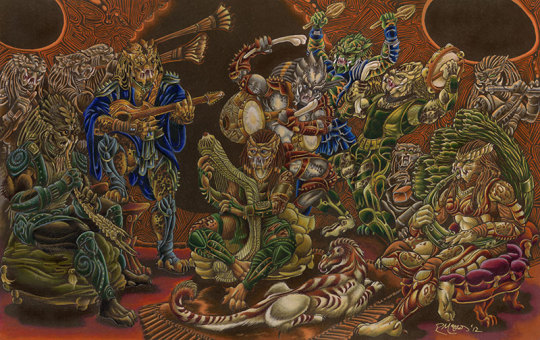
This was a tour de force from 2012 that features several of my DeviantArt friends' Predator characters. It was a trade with the owner of the character placed in the middle, and the harp-like instrument was what she requested that her character play. The rest of the characters got whatever was floating through my head at the time, with a little basic input from the owners.
My character Chaunn is on the left with the toothy wind instrument. Her dad, Khan'nai, plays something like a mandolin. The trio on percussion are three boys with whom I'd worked on a couple of different art trades apiece, so I knew their characters pretty well (and yes, the drums, tambourine, and maracas fit their personalities). The lady on the lower right was a hard call, but said she wanted a horn of some kind. The less colorful players in the background are just fill-in characters.
The fuzzy beast sitting at the central character's feet is from my own headcanon. It's called a pfaukal, and yes, the similarity to a certain Yautja swear-word is deliberate. It's something like cockatoo software running on housecat hardware.
This is a fairly large image at about about 15x20 inches. I used Prismacolor pencils over an ink drawing and watercolor wash. I think it's one of my better efforts, and I'm still proud of it more than ten years later.
#predator#yautja#music#band#instruments#fantasy instruments#fantasy creatures#science fiction creatures#pfaukal#housecat#original characters#all the friends#jam session#traditional art#traditional media#prismacolor
19 notes
·
View notes
Text
Maestro!Sigma headcanons
Did you ask for these? Absolutely not. Will I make some anyway? Absolutely. I'm obsessed with Maestro!Sigma.
He has a DMA - Doctorate of Musical Arts - with a concentration in Conducting and Piano as his primary instrument [I'm not just projecting - hear me out: he has big hands]
During undergrad, he double-minored in Music History and Astrophysics. [Okay, I am projecting]
Dr. Siebren de Kuiper... one of those pianist-conductor freaks that can conduct during a piano concerto. The eyebrows help. For example, Leonard Bernstein: https://youtu.be/cTO77dwm6uk
He also plays cello and a whole gamut of percussion instruments.
He's also pretty good at drumset actually, and believes that many orchestral pieces would be improved with the inclusion of a discerning and knowledgeable improvising drummer.
He's autistic! 100% He has synesthesia. He has figured out how to use the synesthesia to keep track of the orchestra.
He unfortunately, also, has a little bit of tinnitus.
He prefers to conduct without a stick, he prefers the freedom and flexibility of using all hand gestures, but he does keep a stick handy for clarity when coordinating tricky sections with his ensembles or when he's a guest conductor and he finds they aren't quite following.
Part of the way he compels attention is by unintentional intimidation - his sheer size [I mean height!], sometimes his conversational tone is off, sometimes he gets snappy if he doesn't realize that some sensory thing is bothering him [flourescent lights, electrical hum, a new dress shirt has Slightly Wrong Texture], and well, sometimes he gets snappy if you aren't trying to fix what he told you to do the first time.
There are definitely people that don't like him for that last part - you can't hide behind the rest of your section if he's conducting.
Part of the way he compels attention is the fact that there are a ton of musicians crushing on him at some level or another. What? He's gorgeous, and intoxicating to watch this behemoth of a man exercise such fluidity when he conducts.
[He is deeply oblivious to how he flusters some of his musicians as he does not make direct eye contact any longer than necessary to identify who he needs to assist, he's actually usually fixing his eyes on the musicians' hands for technique - another intimidation factor.]
Unlike most conductors, he's not amazing at metaphors unless he's prepared them ahead of time.
Whenever he was employed as a conductor/orchestral director in a University, and after he retired, he would usually also audit a high level Astronomy or Physics class every semester.
If he goes on a tangent during rehearsal, there's a 50% chance it's about space.
Big Star Trek fan. He couldn't pick a favorite series, though, his opinions are too nuanced to rank any entire shows. He'd find something to appreciate about each series. Even Enterprise, even if the theme song makes him want to vomit.
#siebren de kuiper#overwatch sigma#maestro sigma#overwatch#dr. siebren de kuiper#sigma#my sigma/reader fics are hidden from the tags so if you want to check those out...#quietinteger writing
50 notes
·
View notes